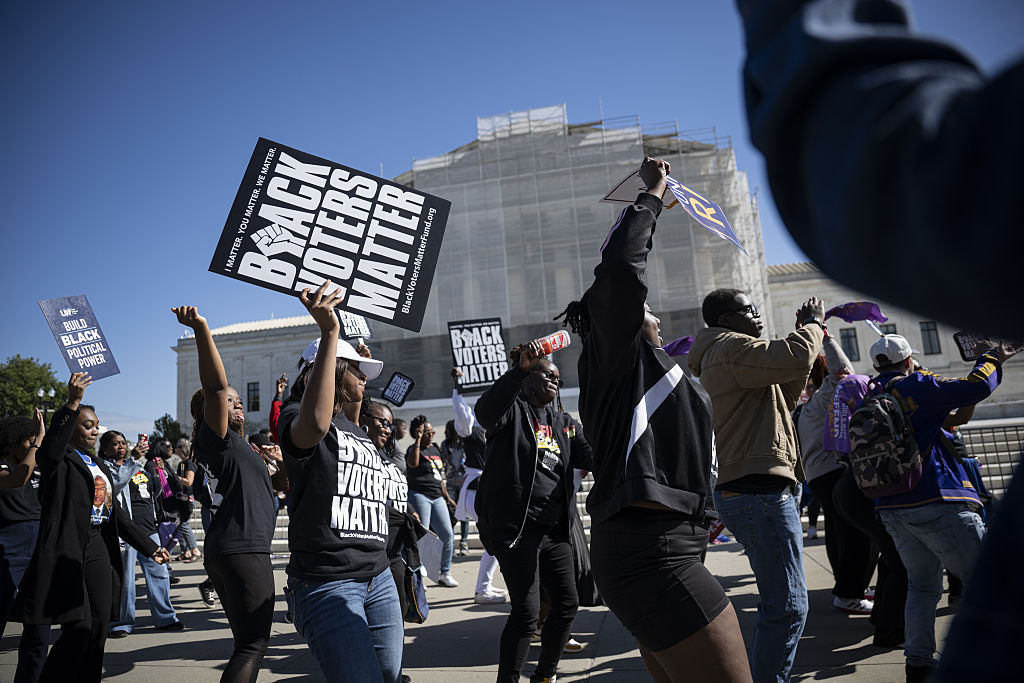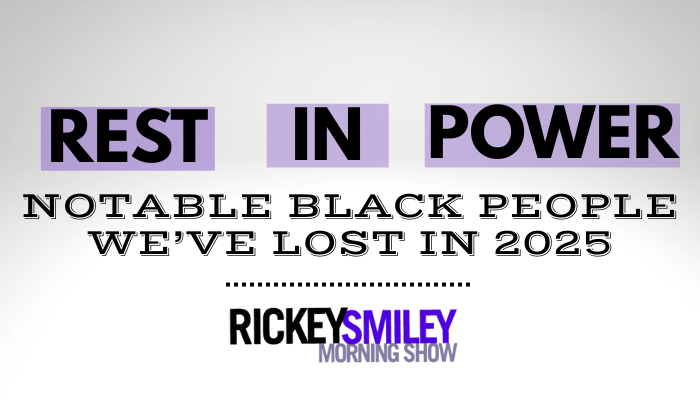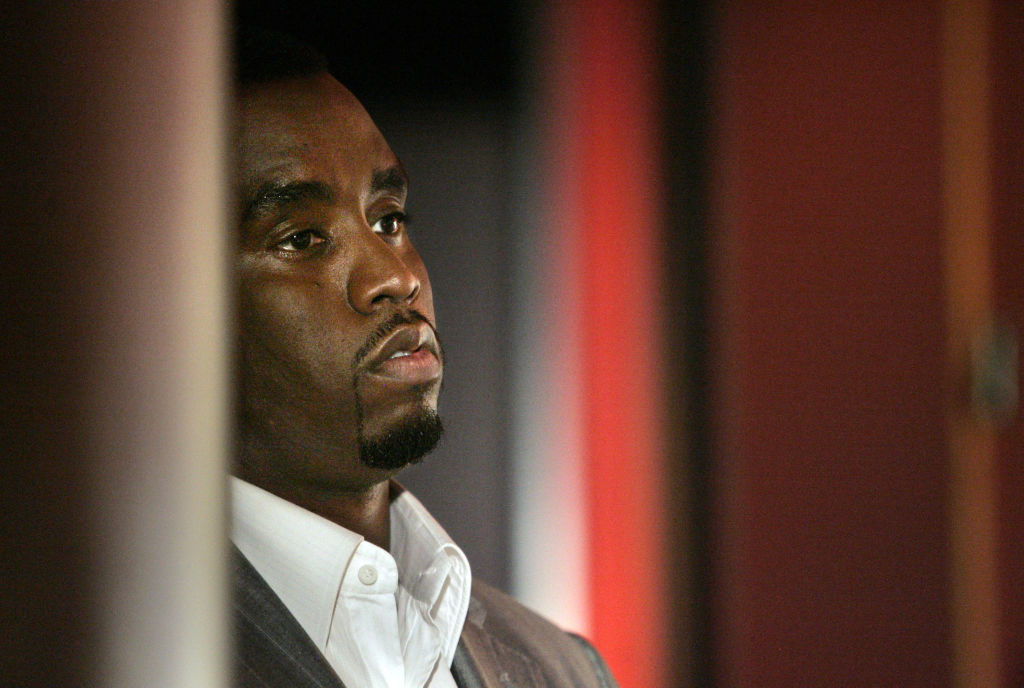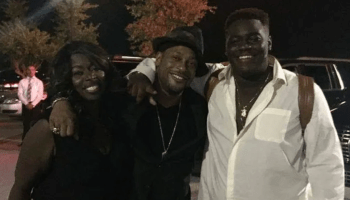Why We Must Fight For Section 2 Of The Voting Rights Act
The Silence Of The Gavel: Why The Fight For Section 2 Of The Voting Rights Act Is The Fight For Our Republic

I’m struggling to find the words to capture the sheer panic I feel right now, but it’s a panic born of truth: the very foundation of our representative democracy is under threat. What’s unfolding before the U.S. Supreme Court over Section 2 of the Voting Rights Act of 1965 isn’t a procedural argument; it’s an existential crisis that could permanently reshape the political landscape and silence the voices of millions of Americans—particularly those of color.
On Wednesday, justices from the highest court in the land began weighing in on a case that will determine whether democracy is going to continue to weaken and be dismantled by questioning one of the most critical safeguards of the civil rights era, Section 2 of the Voting Rights Act of 1965; an act that ensures the government must continue to take proactive steps to ensure fair representation for Black and Brown people.
The case sparking the review, Louisiana v. Callais, stems from a dispute over a single congressional district in Louisiana, drawn after the 2020 Census to ensure that African American voters could elect a candidate of their choice. The state initially drew maps that featured only one majority-Black congressional district, rejecting seven more racially fair maps. Voters sued, and federal courts ordered Louisiana to comply with the Voting Rights Act by drawing new maps in which Black voters would be a majority in a second district, thereby reflecting their share of the population and giving Black Louisianans an equal opportunity to elect representatives of their choice.
The current case, presented by a group of people identifying themselves as “non-African-American voters” have sued to get those racially proportionate maps thrown out, arguing that enforcement of the VRA violates their own rights under the 14th and 15th amendments, claiming that the maps drawn to remedy racial discrimination against Black people instead constitutes racial discrimination against non-Black (aka: white) people.
While the case appears to be localized, it will affect voting on the national level because, at the core, the case is about whether state governments can continue to address discrimination, both historic and ongoing, by taking intentional action to ensure fairness and representation.
“Section 2 has had a major impact, definitely in the South, but really nationwide on improving political representation opportunities for voters in a lot of different communities of color and all around the country,” Kareem Crayton, vice president of the Brennan Center for Justice’s office in Washington, D.C., said. “A decision that leaves the current understanding of Section 2 in grave doubt opens up, unfortunately, a lot of chaos throughout the country in a lot of different jurisdictions.”
For decades, the landmark ruling has served as the precedent and legal tool to combat racial gerrymandering, especially in states with racially polarized voting patterns, like Texas, and their controversial decision to redistrict to find 5 Republican seats for the Trump administration to continue their reign of incompetence.
The Court’s conservative majority, however, has signaled skepticism toward the continued use of race-conscious districting, seemingly siding with the plaintiffs. During recent oral arguments, several justices questioned whether such measures should have an “endpoint,” suggesting discomfort with what they view as race-based policymaking. Justice Brett Kavanaugh echoed that sentiment, stating that “race-based remedies are permissible for a period of time… but they should not be indefinite.”
“The issue, as you know, is that this court’s cases in a variety of contexts have said that race-based remedies are permissible for a period time – sometimes for a long period of time, decades in some cases – but that they should not be indefinite and should have an end point,” Kavanaugh told the attorney representing a group of Black voters who successfully challenged Louisiana’s first map.
Civil rights advocates argue that this framing ignores the persistence of racial polarization in American elections. Justice Ketanji Brown Jackson underscored that point, reminding the Court that Section 2 “is not a remedy in and of itself but the mechanism by which the law determines whether a remedy is necessary.” In her view, the law’s enduring application is not a distortion of equality but an affirmation of it.
During oral arguments, the plaintiffs’ attorney suggested that the defense were demanding a second majority-Black district, prompting Jackson to interject: “No, it’s not,” clarifying that the litigation was about addressing proven vote dilution, not entitlement to a specific remedy; underscoring the constitutional interest in remedying racial discrimination, a point echoed by Justice Elena Kagan earlier in the session.
Alanah Odoms, executive director of the ACLU of Louisiana, highlighted the significance of the ruling and why the reversal would adversely affect communities of color’s ability to fully and fairly participate in democracy.
“The United States Court of Appeals for the Fifth Circuit has affirmed what we’ve always known: Black voters in Louisiana deserve equal representation,” Alanah Odoms, executive director of the ACLU of Louisiana, said. “This is a vital step toward correcting generations of injustice, and we will not stop until every Black Louisianan has the full and fair representation guaranteed to all Americans.”
The political consequences of a ruling against Section 2 could be profound. According to a report by the Black Voters Matter Fund and Fair Fight Action, if Section 2 is overturned, Republican-controlled states could redraw at least 19 additional congressional districts to their advantage.
The impact would be immediate in states such as Texas, Georgia, Florida, Louisiana, and North Carolina, all regions with significant minority populations and deeply polarized voting patterns. Freed from the obligation to draw “minority opportunity districts,” lawmakers could fracture Black and Latino communities across the country in multiple districts by isolating them into single heavily Democratic districts and reducing their overall influence.
According to the report, as much as 30% of the Congressional Black Caucus and 11% of the Congressional Hispanic Caucus could lose their seats. In states such as Alabama, Mississippi, South Carolina, and Tennessee, Black voters could lose all federal representation.
Cliff Albright, co-founder and executive director of Black Voters Matter Fund, warned that the repercussions would extend beyond regional politics, noting that it could reshape Congress, adversely affecting the democratic process in the future.
“What happens in the South doesn’t just stay in the South. This racial gerrymandering has the ability to not just disempower and disenfranchise Black and Latino voters, it can reshape Congress and the country’s democratic future,” Albright said. “They can literally create a permanent one-party rule system without the Voting Rights Act in place and doing it at the expense of Black communities and Black voters.”
The Louisiana case revisits questions the Court addressed in a similar case presented by Republicans two years ago in Allen v. Milligan, when it upheld a similar redistricting order in Alabama, requiring a second majority-Black district for constituents. Chief Justice John Roberts authored that majority opinion, but his recent comments for the current case suggest the Court may now be reconsidering whether those precedents should remain intact.
Louisiana Solicitor General Benjamin Aguiñaga urged the Court to “reevaluate its voting precedents,” arguing that Section 2 has “placed states in impossible situations where the only sure demand is more racial discrimination for more decades.” The Trump-era Department of Justice has aligned with that position, asserting that Section 2’s race-based redistricting requirements are no longer constitutional.
Legal experts warn that overturning or narrowing Section 2 would represent the most significant rollback of voting rights since the Court’s 2013 decision in Shelby County v. Holder, which dismantled Section 5’s preclearance requirement.
“This decision has the potential to be the tipping point where the Court declares unconstitutional or heavily restricts the ability for Congress to create remedies that promote multiracial democracy,” Atiba Ellis, professor and associate dean at Case Western Reserve University School of Law, said.
The stakes surrounding this case reach far beyond one congressional district or one election cycle. If Section 2 falls, minority communities would lose their most effective legal tool to challenge racial discrimination in voting. Without it, experts predict a “redistricting free-for-all” that could permanently reshape Congress.
Fundamentally, this case will determine whether the United States remains committed to the principle of equal representation or whether the promise of the Fifteenth Amendment will once again become, as one advocate warned, “a mere parchment promise.”
The Court’s decision, expected later this term, will not only define the future of the Voting Rights Act but will also test the integrity of the republic itself. The question is no longer whether race matters in redistricting — it is whether democracy can survive without acknowledging that it still does.
SEE ALSO:
Black Voter Disenfranchisement Is On The Supreme Court Docket
Supreme Court Poised To Roll Back Black Voting Rights, Again
- The 50 Hottest, Flyest & Sexiest Looks from Beyoncé’s ‘Cowboy Carter’ Tour
- Urban One Radiothon For St. Jude Kids Raises $1.6 Million
- US Embassy Official Told Trump’s South African Refugee Program Is For White People Only, New Report Says
- Rest In Power: Notable Black Folks Who We’ve Lost In 2025
- Celebs Who Turn 50 This Year
The Silence Of The Gavel: Why The Fight For Section 2 Of The Voting Rights Act Is The Fight For Our Republic was originally published on newsone.com






